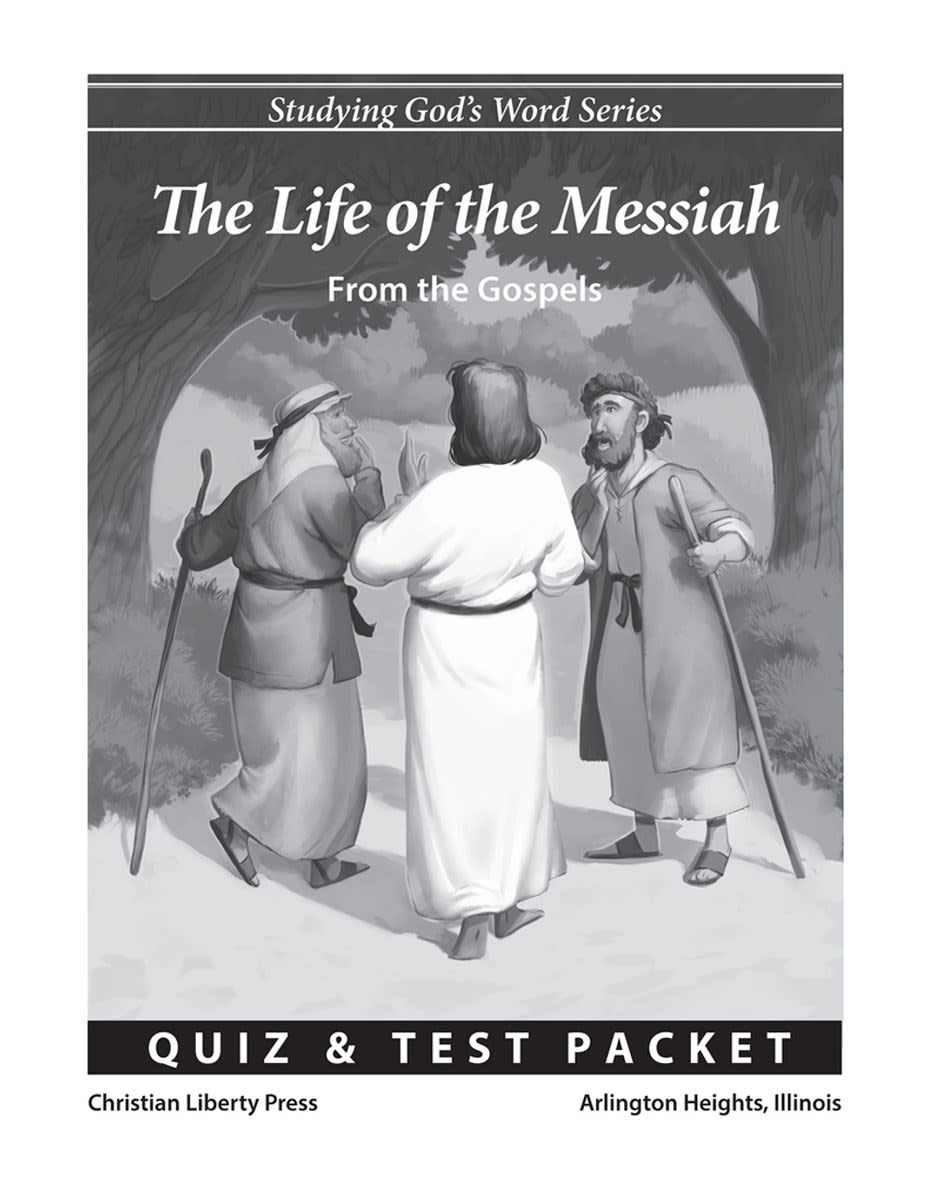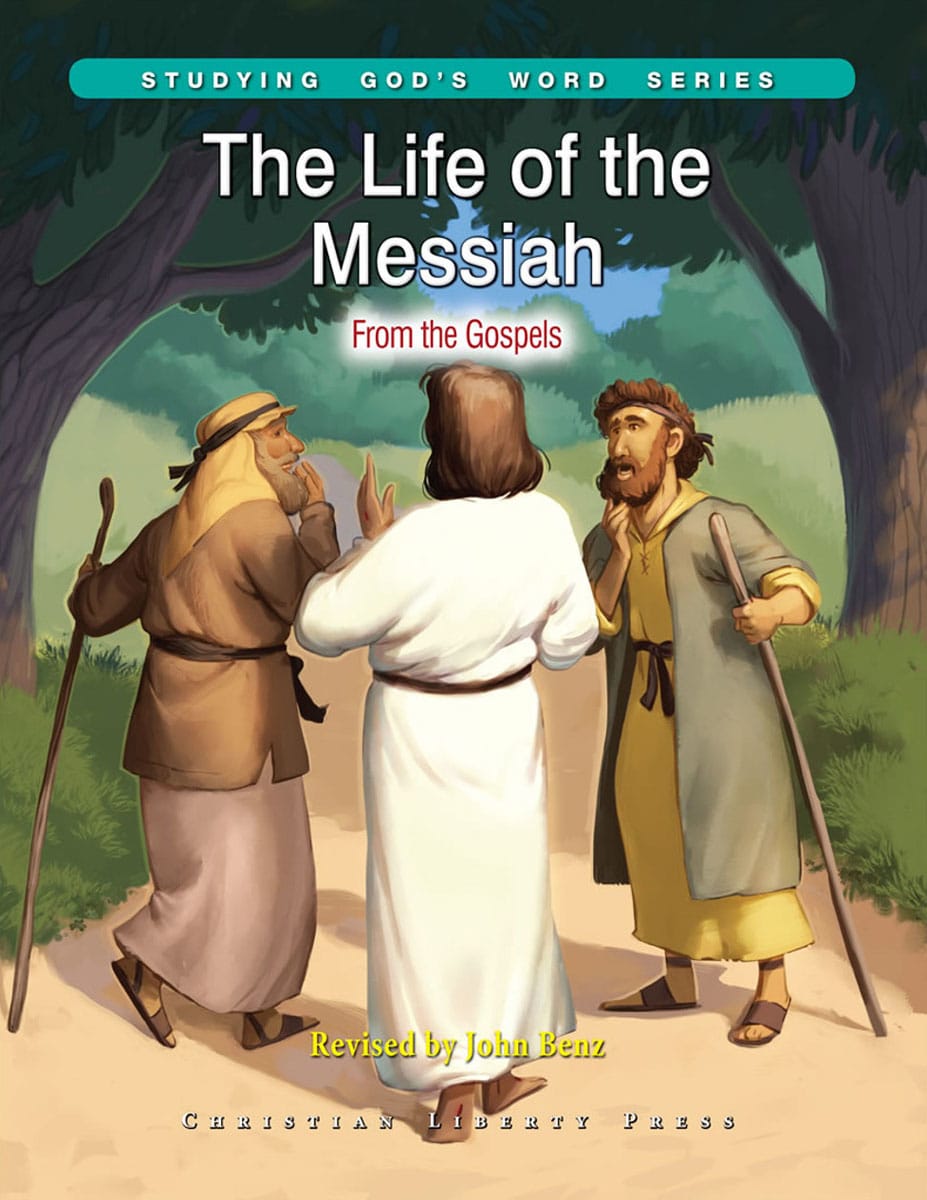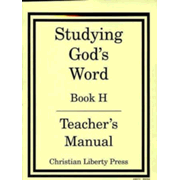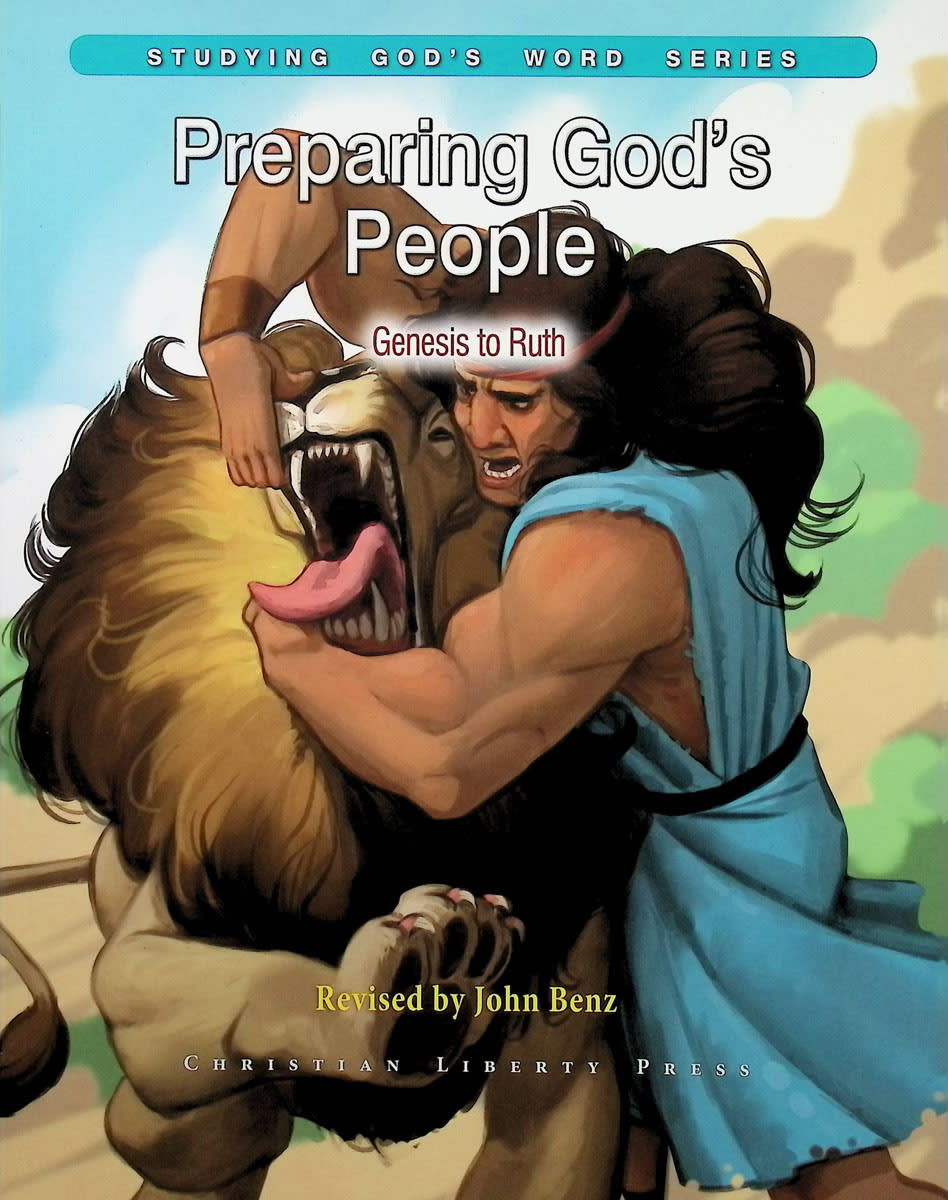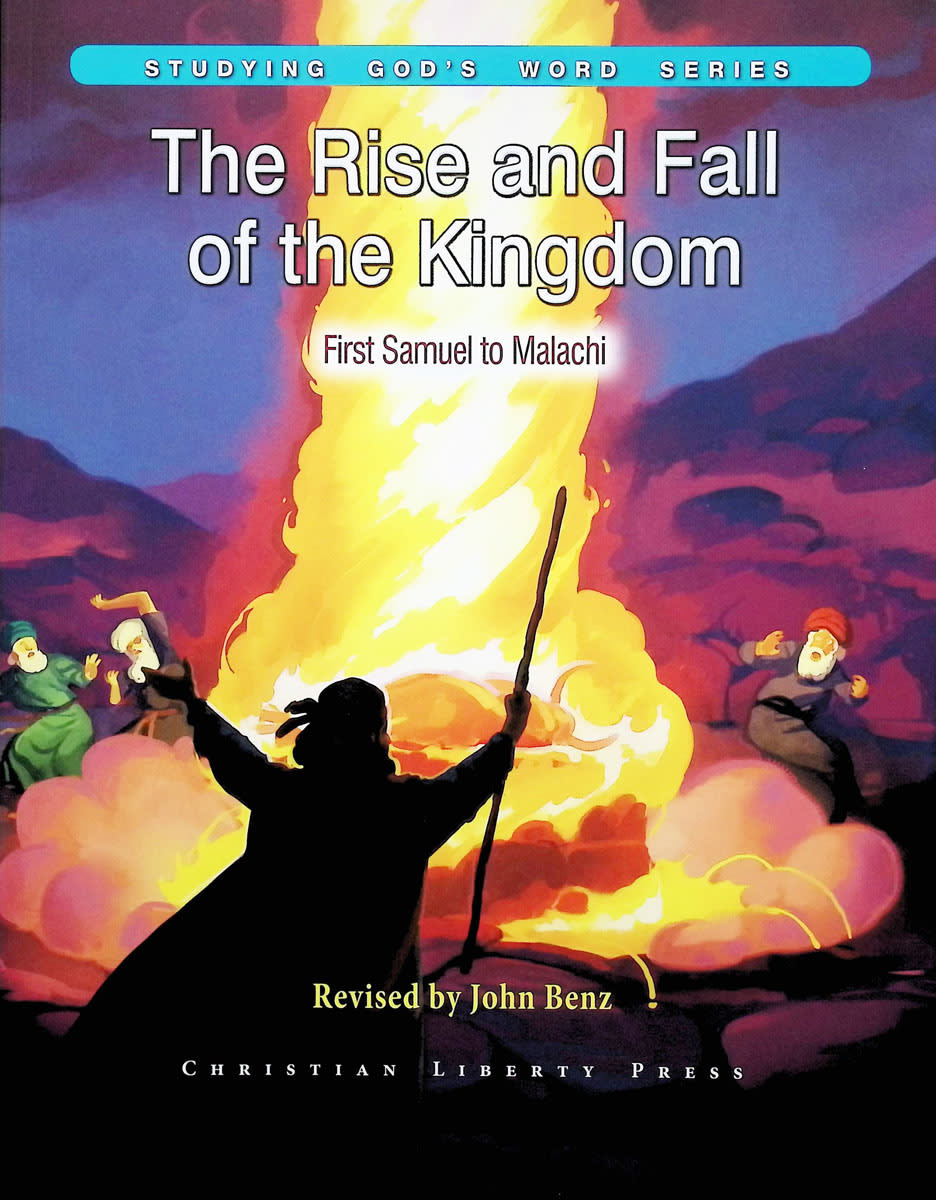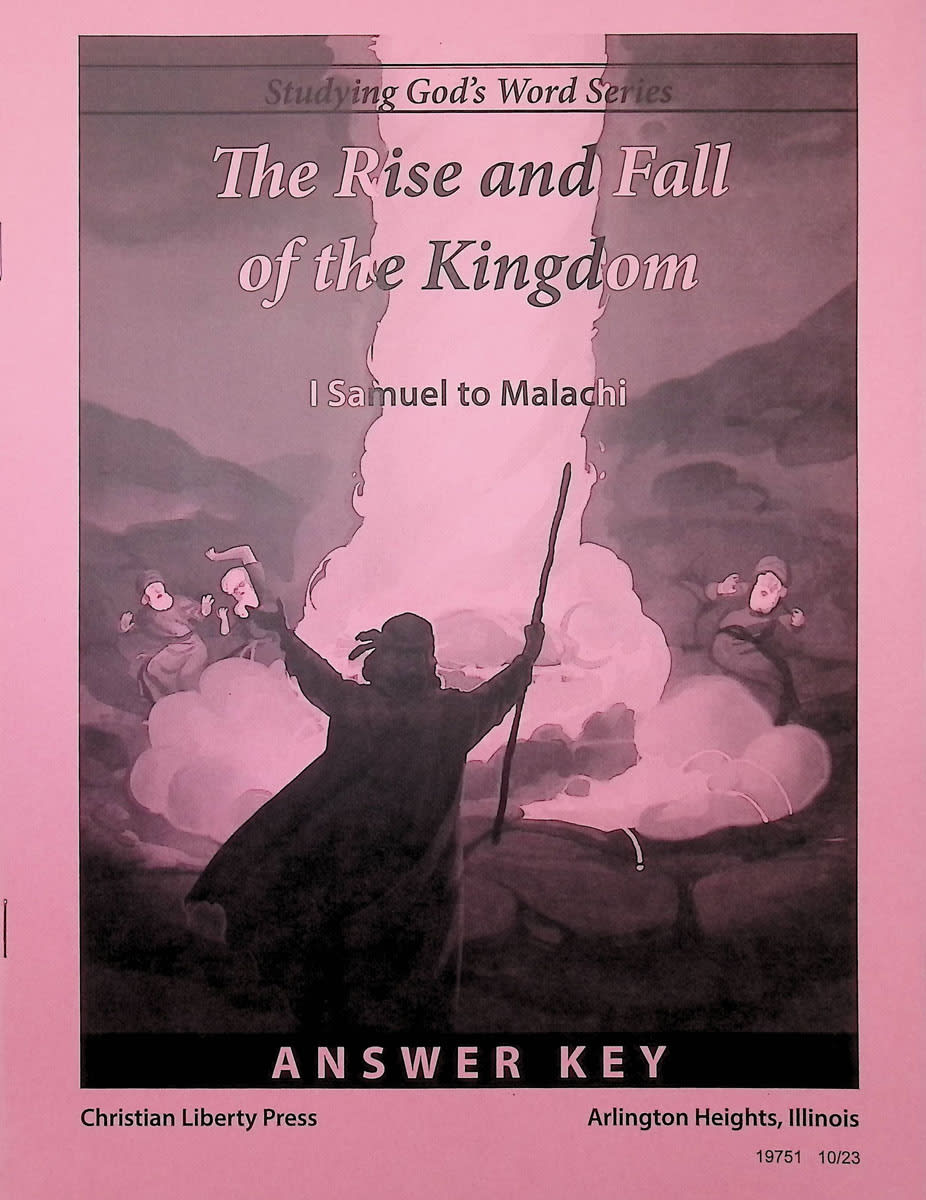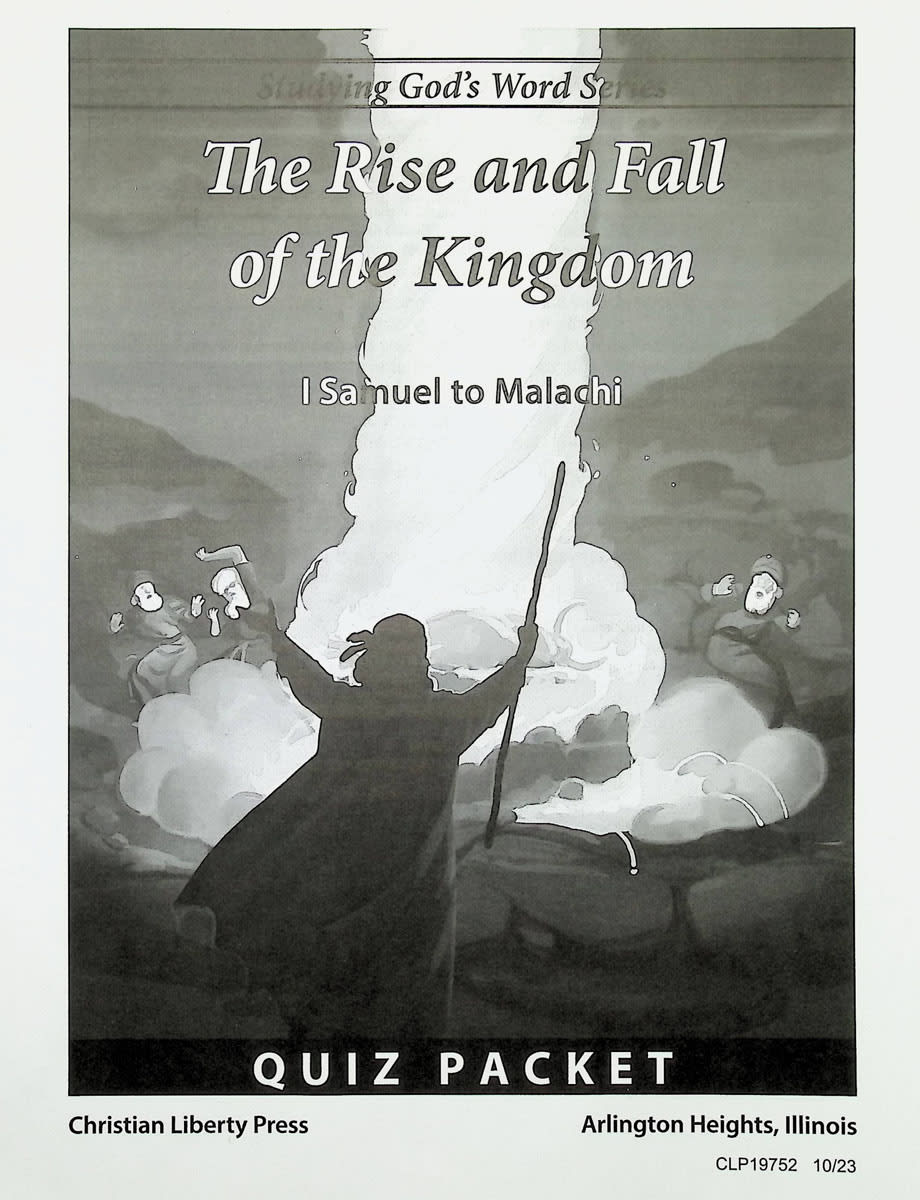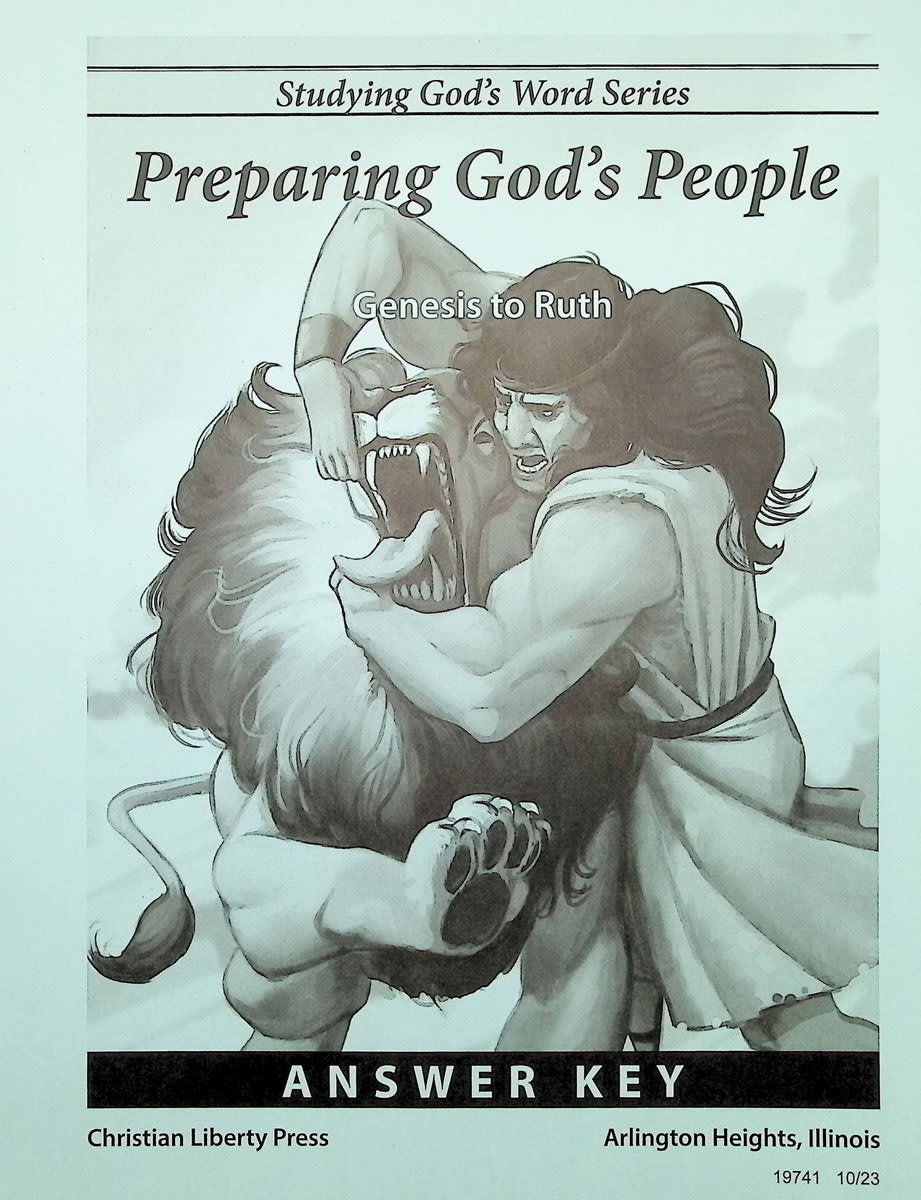Studying God's Word is a non-denominational Bible study series targeting grades three through seven. While each course is suggested for a certain grade level, you can use them with older students since the books do not show grade levels. The content is challenging enough for students one or two years beyond the publisher's suggested grade levels, so for example, you might use Book H up through ninth grade. I would especially recommend beginning the entire series with students in fifth grade and above if they have never done any significant Bible study.
Aside from the first course, this series presents a chronological Bible study. The course for third grade, titled God's Plan for His People: Lessons from the Old and New Testaments, begins with five lessons from the Old Testament that summarize the story of creation, the Fall, and man's need for salvation. The remaining 36 lessons are about the life of Christ. This course sets the stage by telling the overarching story. The next three courses for grades four through six are titled Preparing God's People: Genesis to Ruth, The Rise and Fall of the Kingdom: First Samuel to Malachi, and The Life of the Messiah. They have 36 lessons each and use the New King James Version of the Bible. Book H: A Chronological Study of the Book of Acts, covers the era of the early church.
While lessons are presented chronologically, for the most part, other books of the Bible are referenced where they fit into the chronology. For instance, when covering the books of Kings, correlating content from other biblical books is sometimes inserted in the proper places. The chronological approach helps students get an overview of God's plan of salvation and how the pieces fit together, and it also includes some personal applications and memory verses.
Each course has a consumable worktext and an inexpensive teacher's manual/answer key. The first four courses have weekly quizzes (with an answer key) in their separate quiz packets. The Life of the Messiah adds quarterly tests in its Quiz & Test Packet. Book H has four unit tests within the student worktext. Both the teacher's manuals and quiz packets are provided as stapled packets. The inside pages of all course components are printed in black and white, and the worktexts include some illustrations.
The teacher's manuals begin with a few introductory pages that are essential reading for the parent/teacher, and the remainder serves as your answer key.
How the Courses Work
The revised courses have students complete one lesson per week. They break each lesson down into assignments for five days, although students might sometimes complete more than one day's work on a single day.
Each week's lesson begins with the lesson goal, the "address" of a scripture passage (or passages), and a memory verse. (The first two courses list these beneath a timeline that helps students place events in context. The fourth course uses an abbreviated map in a sidebar showing from the Sea of Galilee to the Dead Sea to locate events geographically.) These are followed by instructional material which might contain background, explanatory information, or a retelling of the scriptural passage. Next are questions that require both recall and applied thinking.
The second day presents additional questions and often directs the student to read the scripture passage(s) for that week's lesson. This is followed by another set of questions.
The third day usually provides students with a puzzle, code, or other entertaining form of learning, along with a few thought questions.
Day four activities vary. They might have students read from the Bible and answer questions, do mapwork, or answer questions that review previously covered material.
The fifth day is for review and a quiz or test.
The courses pose several types of questions. Many are simple recall questions, such as "Who descended upon Jesus as a dove?" (God's Plan for His People, p. 58). Each lesson has a few thought questions that prompt students to apply scripture to their lives, such as "What can you do when you are tempted to do wrong?" (God's Plan for His People, p. 66). Most questions are useful, but a few, such as "How much is an omer?" might seem nitpicky (Preparing God's People, p. 156). Frequent references to the timeline, dates, or maps help students keep the big picture in sight.
Students past third grade should be able to work independently through most parts of the lessons. However, you might find it beneficial to read aloud and discuss the scripture passages, and thought questions could be used for discussion rather than written work. In addition, you should require oral recitation of memory verses.
Book H
Book H about the book of Acts has 43 lessons and requires the completion of slightly more than one lesson per week. Parents and students determine how much to do each day. The lesson presentation is similar to that of the revised editions without the daily assignments. It uses the King James Version of the Bible rather than the RKJV. This course, recommended for seventh grade, will likely be revised soon.
Summary
This entire series is interestingly written and provides solid coverage of the most important biblical concepts. I used this series with my sons, partly because it is one of the few that takes a chronological approach, teaching Bible passages within the context of the big story of salvation. I think it is one of the most effective, yet relatively inexpensive options for Bible study for students below high-school level.











